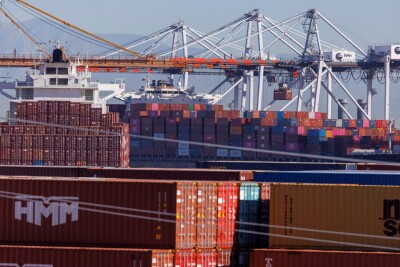Fed easing a mixed blessing for rest of the world
24/09/2025
We're about to see a rare phenomenon in global central banking: the U.S. Federal Reserve is set to embark on an interest rate-cutting cycle just as many of its peers are winding theirs down.
Strictly speaking, the Fed is resuming its easing cycle, having paused last December after announcing 100 basis points of cuts over the preceding three months.Regardless, the world's most important central bank is about to swim against the global tide, something investors haven't seen for many years, especially when it comes to policy easing.
The rest of the world, therefore, may need to be prepared for some choppy waters ahead.
There have been four large global easing cycles since the euro's launch in 1999, including the current one. In the previous three, the Fed was either one of the first big central banks to move, as was the case in 2019, or among the most aggressive rate cutters, as was the case in the dotcom bust.
But last year the Fed was relatively slow off the blocks, as sticky inflation and solid growth meant it pulled the trigger after most of its peers.
As a result, the Fed now finds itself playing catch up to other monetary authorities, especially against the European Central Bank and Bank of Canada, which have cut rates 200 and 225 bps in this cycle, respectively. chart
chart chart
chart
Rates futures markets are currently pricing in around 150 basis points of Fed rate cuts by the end of next year, far more than is expected in the rest of the developed world. Traders expect only another 40-60 bps over the same period from the BoE, BOC, and Reserve Banks of Australia and New Zealand.
Meanwhile, the ECB and Swiss National Bank are thought to be done, while the Bank of Japan is slowly raising rates, taking its own unique path.
This policy divergence may create some problems beyond U.S. shores.


EUR-EKA!
The most immediate and obvious market impact of the policy divergence is being felt in FX markets, as the dollar is weakening once again after a summer of relative stability. Unforeseen - and unwanted - domestic currency strength could complicate life for many central banks around the world.
Take the ECB. Officials are already expecting core inflation to undershoot their 2% target, ending 2027 at 1.8%. Much of the 15% year-to-date euro/dollar rise will already be plugged into their models, but probably not another jump higher in the world's most important exchange rate.
The euro is already on track for its biggest annual rise against the greenback since 2003. If currency strength and tariff-sapped growth depress inflation even more, does that mean the ECB will need to start cutting rates again?
Perhaps. But that would risk lowering the policy rate, which is currently 2% and in the middle of the ECB's 1.75%-2.25% neutral range, into stimulative territory, something influential board member Isabel Schnabel has warned against.
By some measures the region's 'real' inflation-adjusted interest rate is already below 'R-star', the long-run neutral rate that neither accelerates nor slows growth. You can see why Schnabel and others may be wary of further easing.
News

















